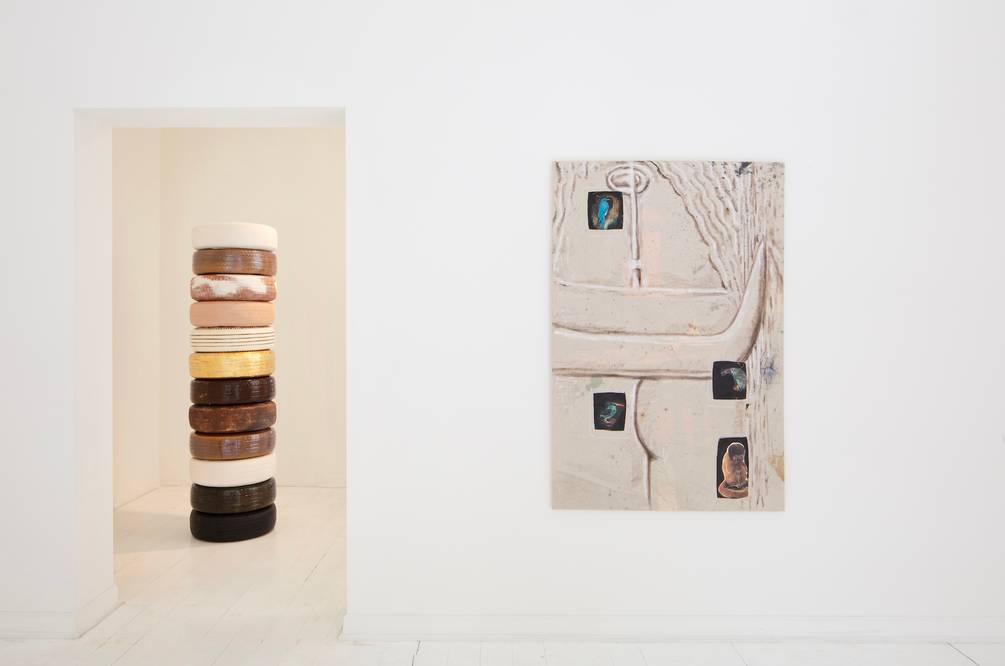
John Isaacs
Under the Volcano
Exhibition
-> Apr 11 – Jul 6
Travesía Cuatro
Travesía Cuatro announce the opening of Under the volcano, a solo exhibition by John Isaacs in which he re-imagines the apocalypse as a space for reflection on the dual nature of catastrophe: both threatening and motivating.
On the day of the opening, at 5pm, there will be the book presentation of The Architecture of Empathy published by Hatje Cantz, edited by Philipp Bollmann, with texts by Martin Kemp, Didi Bozzini, Pierre-Yves Desaive, Dana Žaja, James Putnam and Dieter Mersch and graphic design by Kerstin Fritsche. In this presentation, John Isaacs will be in conversation with Karla Niño de Rivera, curator at Museo Anahuacalli, and artist Romeo Gómez López.
The title of the exhibition Under the volcano is a direct reference to Vesuvius, however it is taken from Malcolm Lowry’s iconic seminal novel, of the same title, set in Mexico, and published in 1947. The novel tells the story of Geoffrey Firmin, an alcoholic British consul in the Mexican city of Cuernavaca, entirely set on the Day of the Dead in November 1938. Volcanoes haunt history, from the valley of Mexico to the Italian coast. Climatic disaster looms large on our news cycle horizon, like the huge shadow of the volcanic mountain that broods over the city of Pompeii to this day.
Vesuvius both provided Pompeii with a way of life in the form of fertile soil and ready building materials, but also the daily reminder of the possibility of eventual destruction, which finally occurred in 79 AD. Pompeii, along with Herculaneum was buried under 4 to 6 m of volcanic ash and pumice in the eruption of Mount Vesuvius. The act of destruction and burial became the very preservation of the city, as it lay hidden under the ash for centuries. During the later excavations archeologists inserted terracotta tiles into the walls as they were re-constructed to indicate the separation between the original wall structures and the subsequent re-construction. These lines of tiles make simple yet abstracted graphic gestures which, while visiting Pompeii in 2023, reminded Isaacs of work of abstract artists such as the pencil lines of CY Twombly’s paintings. Through each painting or sculpture or 'object', as Isaacs prefers to call them, the materiality is transcended to think about the message encrypted in the image they present. The aspiration of these new works is to invite a non specific yet mediated emotional response, in which Isaacs has purposefully removed all non essential gestures, while ‘loading’ the objects with a sense of history and purpose. The degraded surface and patina of each work is in itself an attempt to move beyond the contemporary, to transcend the moment of the origin of these objetos, which seem to emanate from a collective psychological history, revealing themselves primarily as artefacts.
The work of John Isaacs (1968. Lancaster, UK) encompasses many different media, though much of it has origins in sculpture. The artist continually redefines his style, moving seamlessly through installation, sculpture, photography, film, painting and drawing. Whatever the media, Isaacs’ pieces typically inspire contemplation. Through his often humorous mixing of appealing optimism with abject pessimism, Isaacs examines our historically and culturally determined conventions. In so doing, the artist makes no distinctions between high and low, finding instead that all things have their root in the same base instincts. In his work, there is a strong sense of the universal connection that underlies our apparent isolation from one another as well as the presence of dreams, successes and failures of the individual and society. Isaacs’ iconic sculptural work ‘The architecture of Empathy’, is currently exhibited in the new re-hang of the Renaissance and Middle Ages collection of the Palais Beaux Arte’s Lille. Le Moyen Âge Réinventé, Réouverture des salles du Moyen Âge et de la Renaissance, Palais des Beaux Arts de Lille, France. Imagine Worlds, Kunst Meran Merano Arte, Merano, Italy. Suppose You Are Not, Arter, Istanbul, Turkey. Disorders – Excerpts from the Collection Antoine de Galbert, Musée d'Art Contemporain, Lyon, France. He lives and works in Berlin.
— Travesía Cuatro